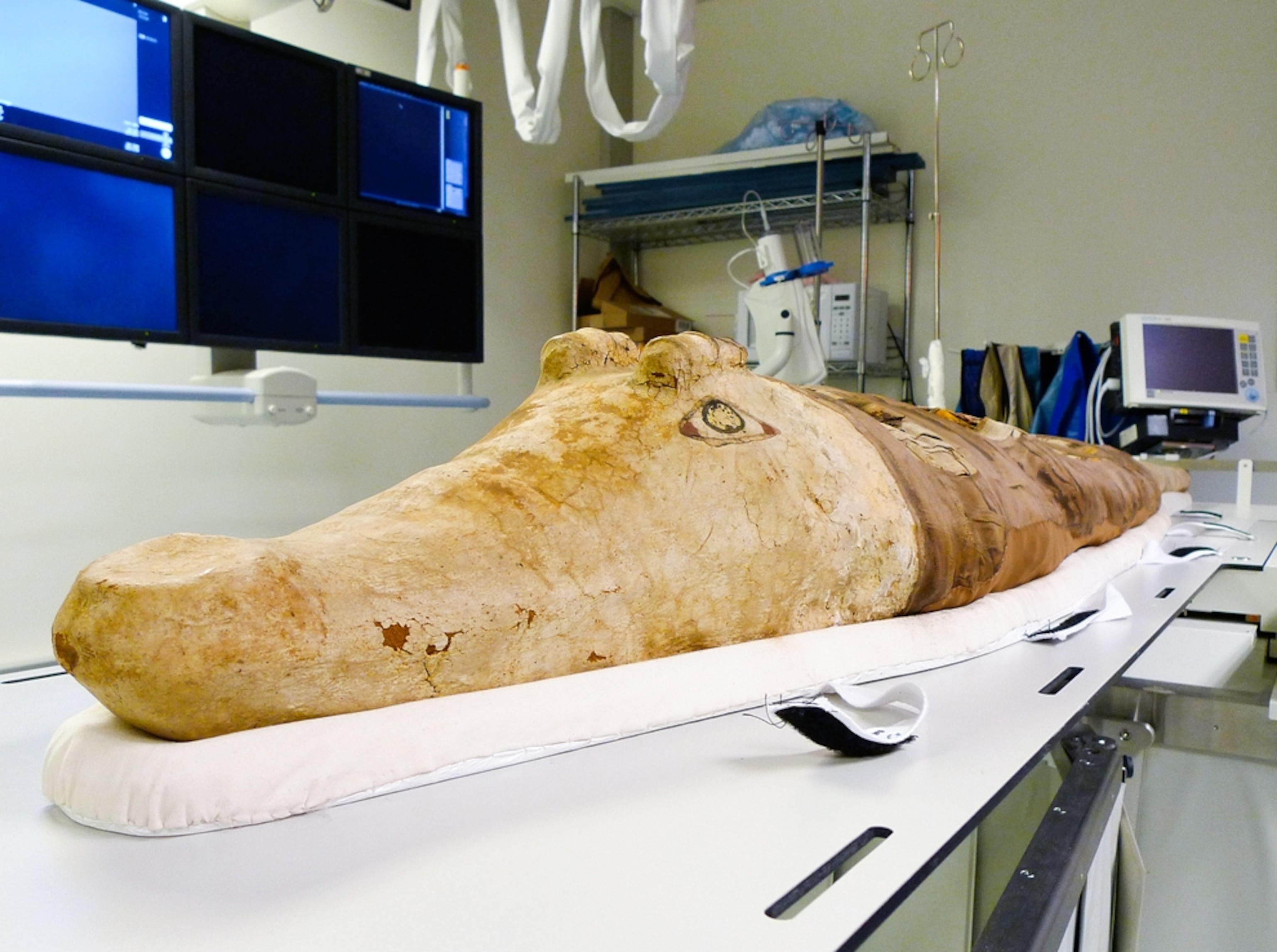
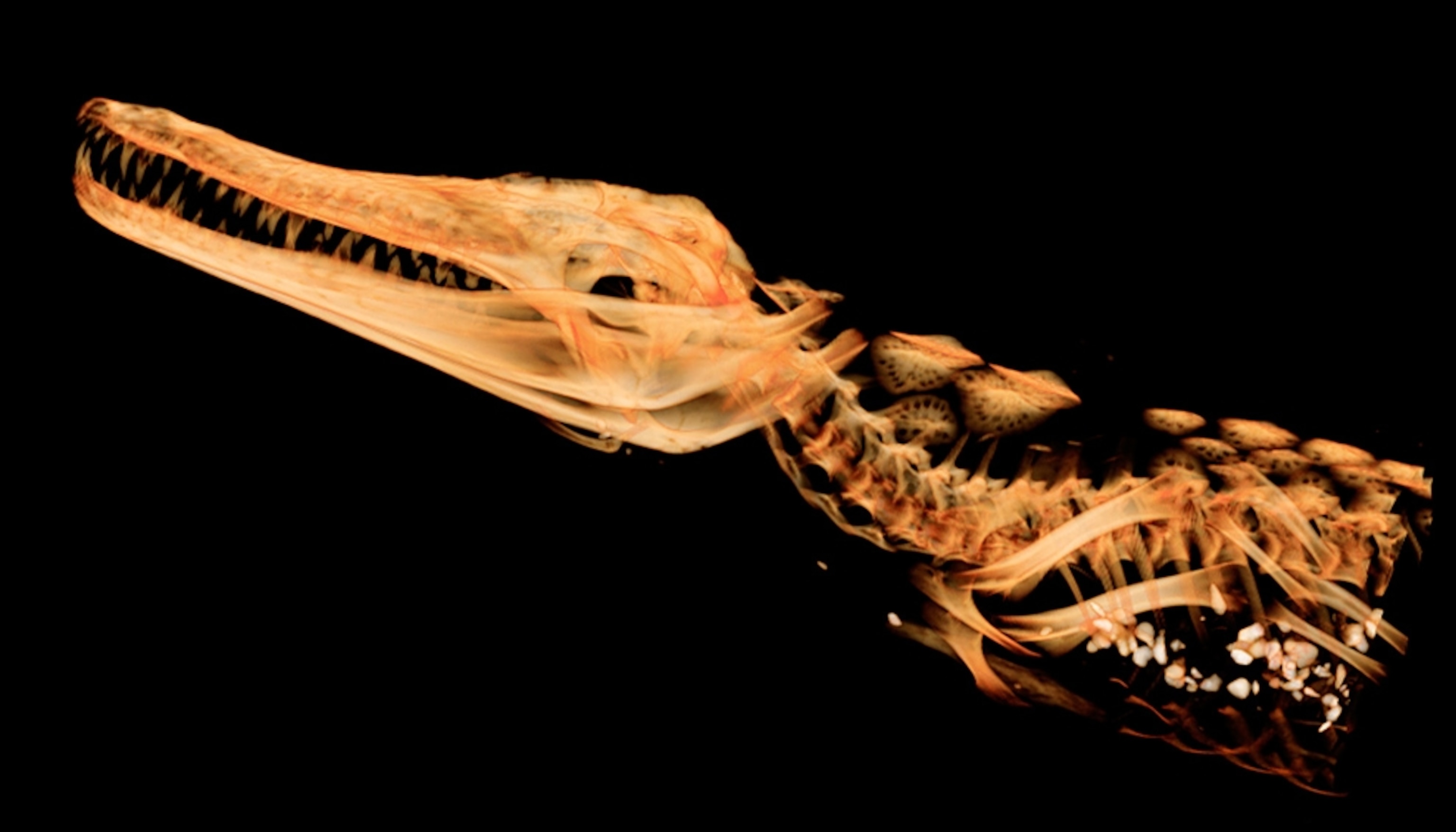
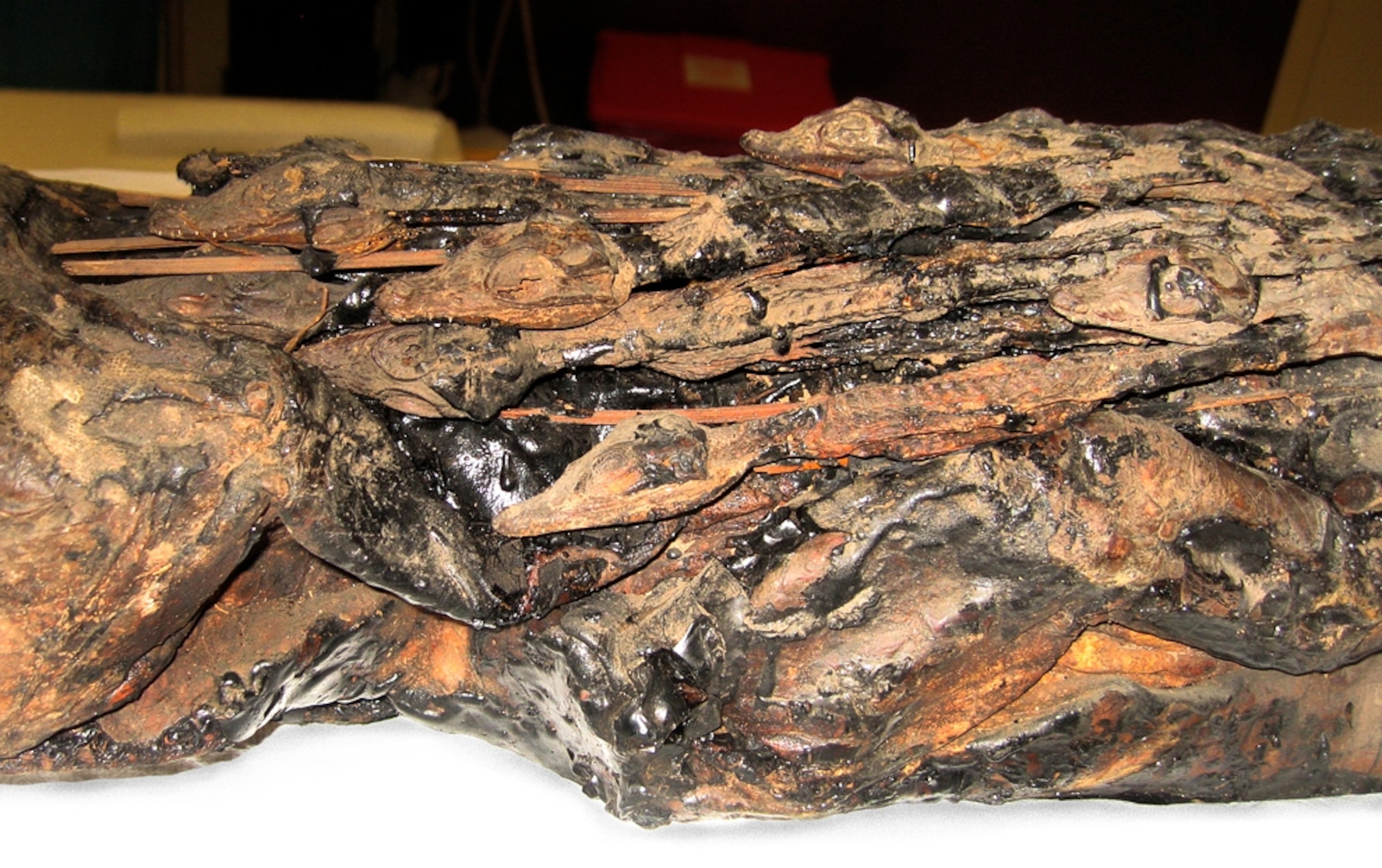
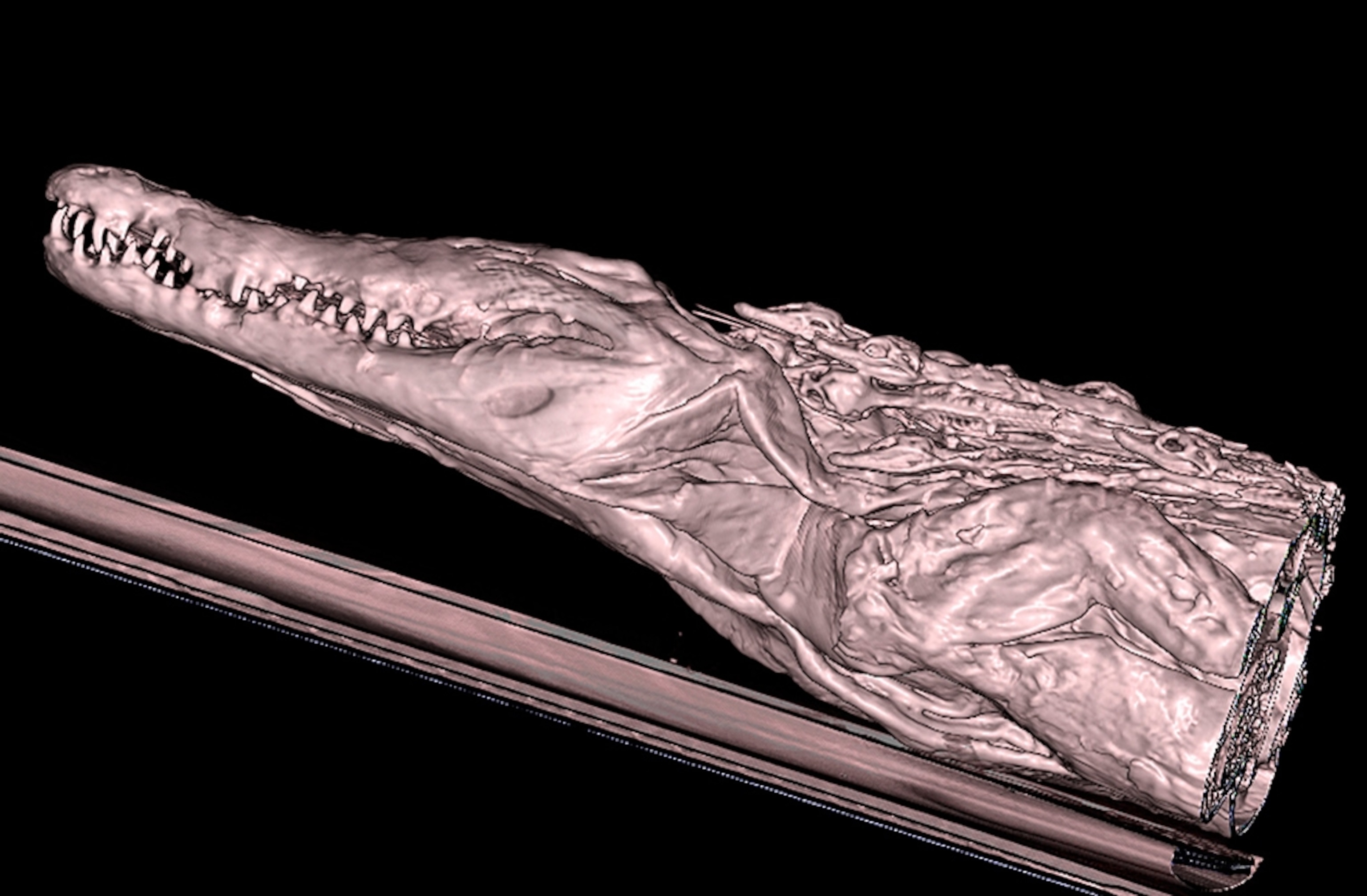
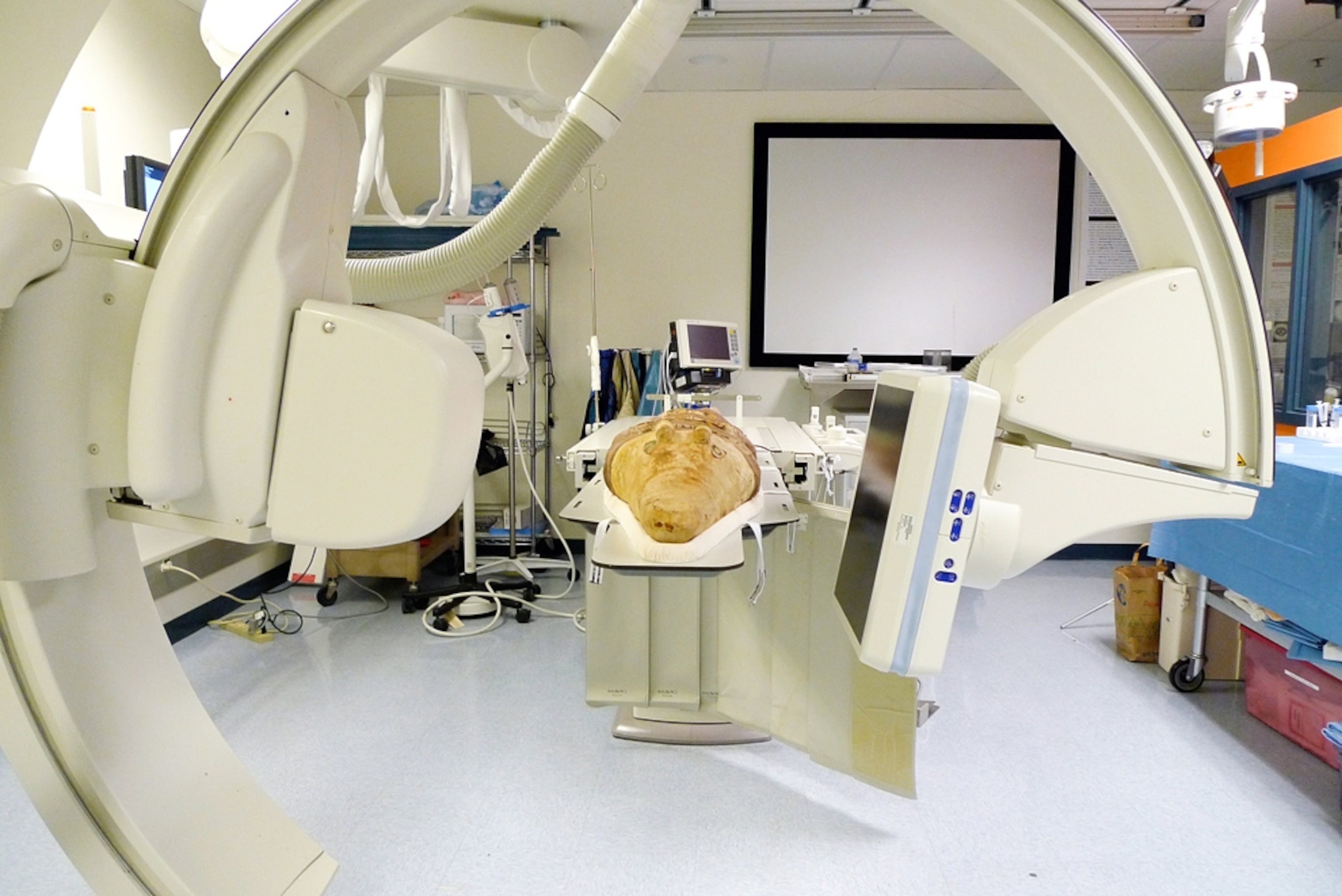

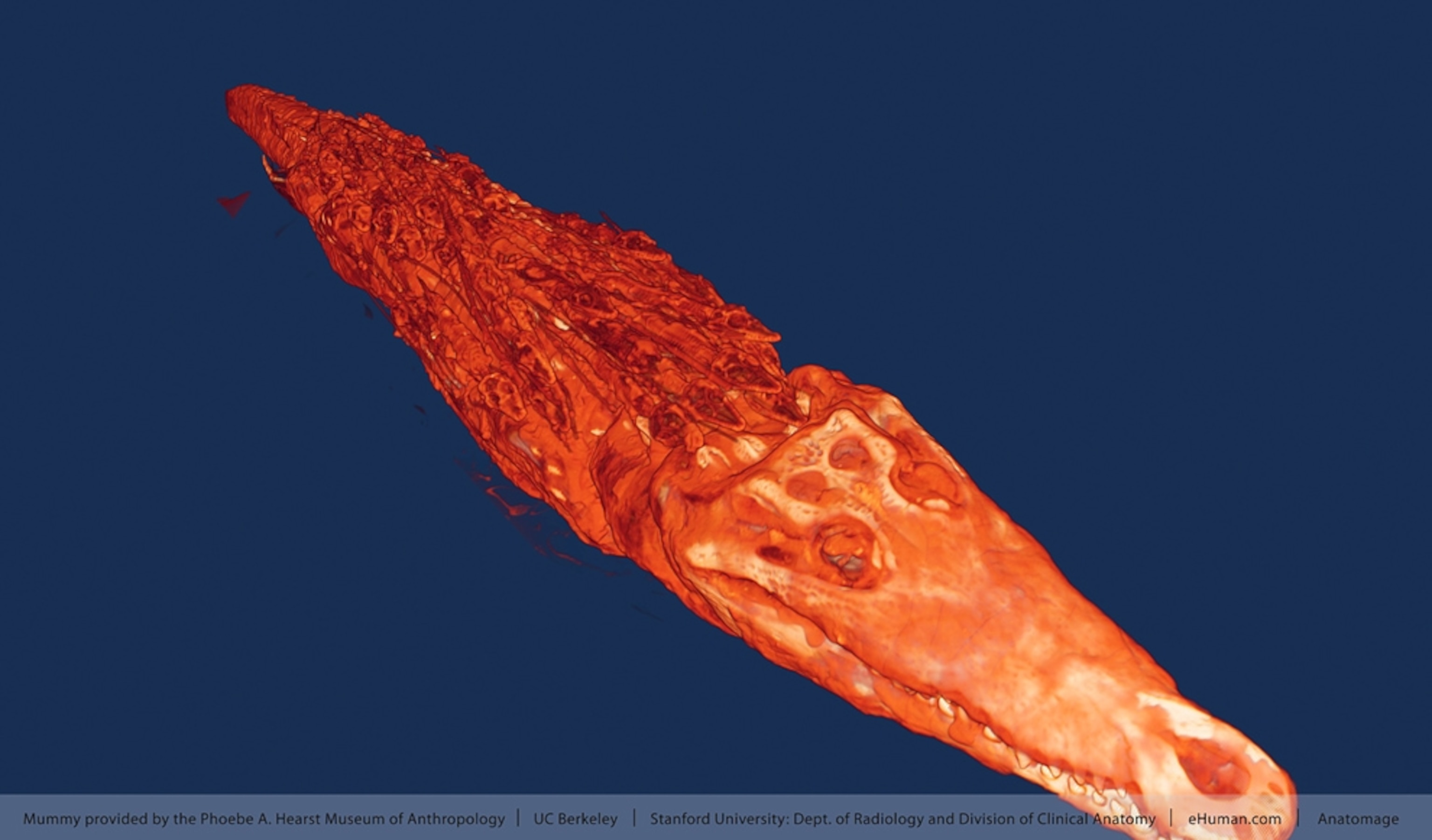
Photograph courtesy John Stafford, Stanford School of Medicine
Pictures: Ancient Egypt Crocodile Mummies Revealed
A crocodile's last meal and an ancient fishhook are among "exciting" details revealed by new CT scans of the 2,000-year-old mummies.
May 2, 2010
Related Topics
You May Also Like
Go Further
Animals
- Why manatees often lurk close to Florida's power plantsWhy manatees often lurk close to Florida's power plants
- This Ecuadorian frog was lost for 100 years—until nowThis Ecuadorian frog was lost for 100 years—until now
- We now know why Florida fish spin in circles until they dieWe now know why Florida fish spin in circles until they die
Environment
- This little bird tells the story of the East Coast’s disappearing marshesThis little bird tells the story of the East Coast’s disappearing marshes
- ‘Corn sweat’—and other weird weather phenomena—explained‘Corn sweat’—and other weird weather phenomena—explained
History & Culture
- The 5 scariest mythological witches from around the worldThe 5 scariest mythological witches from around the world
- Meet Emiliano Zapata: hero and martyr of the Mexican RevolutionMeet Emiliano Zapata: hero and martyr of the Mexican Revolution
- Everything you need to know about Hispanic Heritage MonthEverything you need to know about Hispanic Heritage Month
- Your favorite foods have surprising global originsYour favorite foods have surprising global origins
- How did ancient Egyptian obelisks end up all over the world?How did ancient Egyptian obelisks end up all over the world?
Science
- Why this type of carb is so good for your gut healthWhy this type of carb is so good for your gut health
- Is America’s legal alcohol limit for driving too high?Is America’s legal alcohol limit for driving too high?
- This Ecuadorian frog was lost for 100 years—until nowThis Ecuadorian frog was lost for 100 years—until now
Travel
- 10 ways to see a different side of Spain
- Travel
- Destination Guide
10 ways to see a different side of Spain - 8 of the best coastal towns in Italy away from the crowds8 of the best coastal towns in Italy away from the crowds
- A photographic journey to Quilotoa, Ecuador’s volcanic crater lake
- Paid Content
A photographic journey to Quilotoa, Ecuador’s volcanic crater lake




